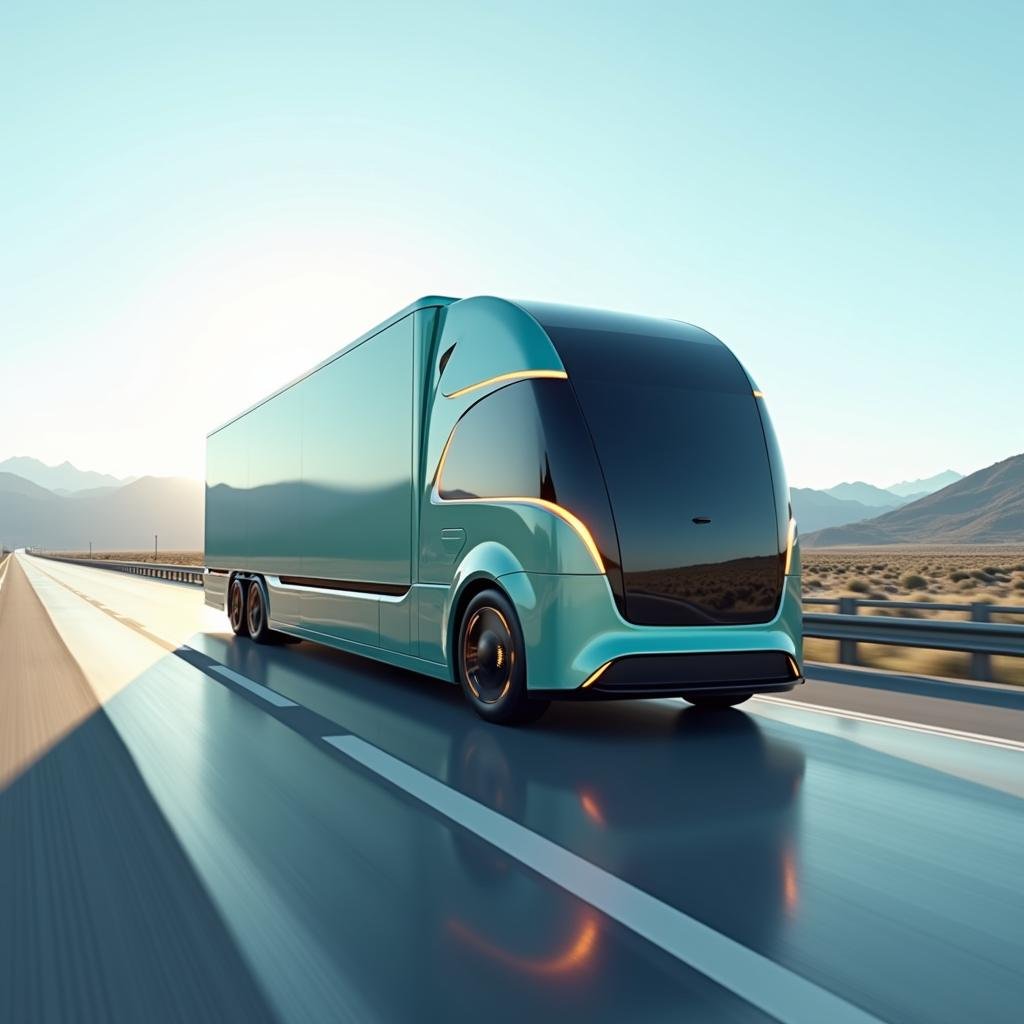In an industry where safety is paramount, the evolution of trucking technology has never been more critical. As we move through 2025, trucking safety innovations are revolutionizing how fleet managers protect their drivers and other road users. With approximately 500,000 truck accidents occurring annually in the United States, according to the Federal Motor Carrier Safety Administration, the need for advanced safety solutions has reached unprecedented levels. Today’s article explores five groundbreaking technologies that are significantly reducing accidents and saving lives across America’s highways.
The Current State of Trucking Safety in America
Before diving into the technologies reshaping the industry, it’s important to understand where trucking safety standards currently stand. Despite rigorous regulations and improved driver training programs, commercial truck accidents remain a serious concern. The sheer size and weight of these vehicles—often exceeding 80,000 pounds when fully loaded—means that collisions involving trucks typically result in more severe consequences than those involving passenger vehicles alone.
The statistics tell a sobering story:
- Commercial trucks represent approximately 4% of registered vehicles but are involved in over 10% of fatal highway accidents
- Driver fatigue contributes to roughly 13% of all truck-related crashes
- Nearly 30% of truck accidents involve some form of brake-related issue
- Technical failures and maintenance problems account for approximately 10% of accidents
The good news? Advanced trucking safety technology is making significant inroads in addressing these challenges. Let’s explore the five most impactful innovations of 2025.
1. Advanced Driver Assistance Systems (ADAS): The New Standard
Perhaps no development has transformed trucking safety more dramatically than the widespread adoption of Advanced Driver Assistance Systems. Once considered premium add-ons, these sophisticated systems have become standard features on most commercial trucks manufactured in the past two years.
How Modern ADAS Works
Today’s ADAS integrates multiple technologies to create comprehensive safety nets for truck drivers:
- Adaptive Cruise Control (ACC): Automatically adjusts truck speed to maintain safe following distances
- Lane Keeping Assistance: Provides subtle steering corrections to prevent unintentional lane departures
- Collision Mitigation Braking: Automatically applies brakes when an imminent collision is detected
- Blind Spot Detection: Alerts drivers to vehicles in hard-to-see areas, particularly crucial for large trucks
What makes the 2025 generation of ADAS truly revolutionary is the integration of artificial intelligence that learns from individual driver behaviors and adapts accordingly. These systems now recognize patterns that might indicate fatigue or distraction before they become dangerous, providing timely alerts to drivers.
According to a recent study by the Insurance Institute for Highway Safety, trucks equipped with comprehensive ADAS packages have experienced a remarkable 63% reduction in rear-end collisions and a 47% decrease in lane-departure accidents.
2. Real-Time Driver Monitoring Systems: Preventing Fatigue-Related Accidents
Driver fatigue remains one of the most persistent challenges in commercial truck safety. The 2025 generation of driver monitoring systems addresses this issue with unprecedented sophistication.
Biometric Sensing Technology
Modern cab environments now incorporate non-intrusive biometric sensors that can detect subtle changes in driver physiology:
- Eye-tracking technology measures blink rates and pupil dilation to detect early signs of drowsiness
- Facial recognition systems analyze micro-expressions that might indicate fatigue or stress
- Steering pattern analysis identifies changes in driver input that could signal decreased alertness
- Cabin-facing cameras with AI processing detect head nodding and other fatigue indicators
What makes these systems particularly effective is their proactive approach. Rather than simply alerting drivers after dangerous behavior occurs, they identify fatigue before it reaches critical levels.
“The development of predictive fatigue monitoring represents one of the most significant advances in trucking safety technology of the past decade,” notes Dr. Amanda Reynolds, transportation safety researcher at MIT’s Transportation Research Institute. “We’re now able to alert drivers to take breaks based on their actual physiological state, not just arbitrary time intervals.”
Integration with Fleet Management
These monitoring systems don’t operate in isolation. They communicate with fleet management systems, allowing dispatchers to suggest rest stops or even reroute drivers when signs of fatigue appear. Some fleets have implemented protocols where AI-detected fatigue automatically triggers rescheduling to ensure drivers can take needed rest.
Early adoption data from fleets using these comprehensive fatigue management systems shows a stunning 78% reduction in fatigue-related incidents, making this technology one of the most impactful safety innovations in the industry.
3. Intelligent Route Optimization: Preventing Accidents Before They Happen
While much attention focuses on technological interventions that assist drivers during operation, equally important are the systems that plan safer journeys from the start. Advanced route optimization tools have evolved beyond simple navigation to become comprehensive trucking safety platforms.
Dynamic Risk Assessment
Today’s route optimization systems consider an unprecedented range of safety factors:
- Weather prediction integration: Routes are continuously adjusted based on real-time weather forecasts and road condition reports
- Traffic density analysis: Systems identify and avoid high-risk traffic patterns and congestion hotspots
- Road safety scoring: Routes incorporate data on historical accident rates, road design, and construction zones
- Time-of-day risk mapping: Planning accounts for visibility conditions and known high-risk time periods
What makes these systems particularly effective is their continuous learning capability. Each trip generates data that refines future routing decisions, creating an ever-improving safety profile for each potential route.
Driver-Specific Adaptations
The most sophisticated systems now tailor routes to individual driver profiles. A less experienced driver might be routed to avoid challenging mountain passes during adverse weather, while a driver with limited night vision might receive routes that minimize after-dark driving.
As reported by Transport Topics, fleets implementing AI-driven route optimization have reported up to 35% fewer accidents in high-risk areas, demonstrating how intelligent planning can serve as a powerful preventive safety measure.
4. Vehicle-to-Everything (V2X) Communication: Creating Safer Highways
Perhaps the most transformative development in trucking safety technology is the widespread implementation of Vehicle-to-Everything (V2X) communication. This technology enables trucks to exchange critical safety information with other vehicles, infrastructure, pedestrians, and network systems.
The Connected Truck
V2X systems create a continuous stream of safety-critical communication:
- Vehicle-to-Vehicle (V2V): Trucks share position, speed, and directional data with nearby vehicles, alerting drivers to potential collision risks
- Vehicle-to-Infrastructure (V2I): Communication with traffic signals, bridge height warnings, and road condition sensors
- Vehicle-to-Pedestrian (V2P): Alerts to the presence of vulnerable road users, especially in urban environments
- Vehicle-to-Network (V2N): Connection to cloud-based traffic management and safety alert systems
The 2025 implementation of these systems represents a quantum leap forward from earlier iterations. Today’s V2X networks operate with latency measured in milliseconds—allowing for truly real-time hazard avoidance.
Real-World Applications
In practice, V2X creates multiple layers of safety redundancy. For example, a truck approaching an intersection might receive:
- A signal from the traffic light indicating an imminent change
- Alerts about vehicles approaching from cross streets
- Warnings about pedestrians entering crosswalks
- Information about slippery conditions detected by other vehicles
This multi-layered awareness allows for predictive rather than reactive safety measures. Early data from transportation corridors with high V2X adoption rates shows intersection accidents involving commercial trucks have decreased by an impressive 42%.
As one fleet safety manager put it, “V2X essentially gives our trucks a sixth sense. They’re aware of hazards before they’re visible, which is invaluable when you’re operating vehicles with longer stopping distances.”
5. Autonomous Emergency Braking 2.0: The Last Line of Defense
While earlier versions of emergency braking systems have been available for years, the 2025 generation—often called “AEB 2.0″—represents a fundamental rethinking of how these critical systems function in the trucking safety ecosystem.
Multi-Sensor Fusion
Modern AEB systems no longer rely on a single sensing technology. Instead, they fuse data from:
- High-definition radar with enhanced object classification
- Lidar systems providing precise distance measurement
- Multiple camera arrays with advanced image recognition
- Information from V2X networks about vehicles beyond line-of-sight
This multi-sensor approach dramatically reduces false positives while extending the effective range of the system to provide earlier warnings and more gradual braking interventions.
Intelligent Braking Decisions
Perhaps most impressively, modern AEB systems don’t simply trigger emergency stops. They make sophisticated decisions about the optimal braking strategy based on:
- Load weight and distribution (different approaches for loaded vs. unloaded trailers)
- Road surface conditions and available traction
- The nature of the detected hazard (stationary object vs. slower-moving vehicle)
- Presence of vehicles following closely behind (potential for secondary collisions)
The effectiveness of these systems is remarkable. According to recent data, trucks equipped with advanced AEB systems experience 71% fewer rear-end collisions and 63% less severe outcomes when collisions do occur.
“We’ve moved beyond simply stopping the truck to systems that can make split-second decisions about the safest possible outcome in unavoidable collision scenarios,” explains Kevin Martinson, Chief Safety Officer at TransAmerica Trucking. “It’s like having an expert safety driver ready to take over in milliseconds.”
Implementation Challenges and Future Outlook
While these technologies offer tremendous promise for enhancing trucking safety, their implementation across the industry faces several challenges:
Adoption Barriers
- Cost considerations: Many smaller fleets struggle with the initial investment required
- Training requirements: Drivers need comprehensive training to work effectively with new systems
- Integration with existing equipment: Retrofitting older trucks presents technical challenges
- Regulatory adaptation: Standards and compliance requirements are still evolving
Despite these challenges, industry analysts project that by the end of 2025, over 65% of active commercial trucks will incorporate at least three of the five technologies discussed, with new vehicles almost universally implementing all five.
The Road Ahead
Looking beyond 2025, the integration of these technologies with increasingly autonomous driving features promises to create even safer highway environments. The development of dedicated truck lanes with specialized infrastructure communications could further enhance safety benefits.
As one industry expert noted, “We’re witnessing the early stages of a safety revolution in trucking. The technologies being implemented today will serve as the foundation for even more advanced systems in the coming decade.”
Conclusion: A Safer Future for Trucking
The five technologies highlighted in this article—Advanced Driver Assistance Systems, Real-Time Driver Monitoring, Intelligent Route Optimization, Vehicle-to-Everything Communication, and Advanced Emergency Braking—represent the cutting edge of trucking safety innovation. Together, they address the primary causes of commercial truck accidents: driver error, fatigue, environmental challenges, and mechanical failures.
The data is clear: fleets implementing these technologies are experiencing significantly fewer accidents, less severe outcomes when incidents do occur, and improved operational efficiency as a bonus. For fleet managers, the question is no longer whether to adopt these technologies, but how quickly they can be implemented.
Is your fleet prepared for the new era of trucking safety? Our team of transportation safety consultants specializes in helping companies of all sizes develop cost-effective strategies for implementing these life-saving technologies. From technology assessment to driver training programs, we provide comprehensive support throughout the modernization process.
Ready to make your fleet safer? Complete our quick assessment form, and one of our safety specialists will contact you within 24 hours to discuss tailored solutions for your operation.


